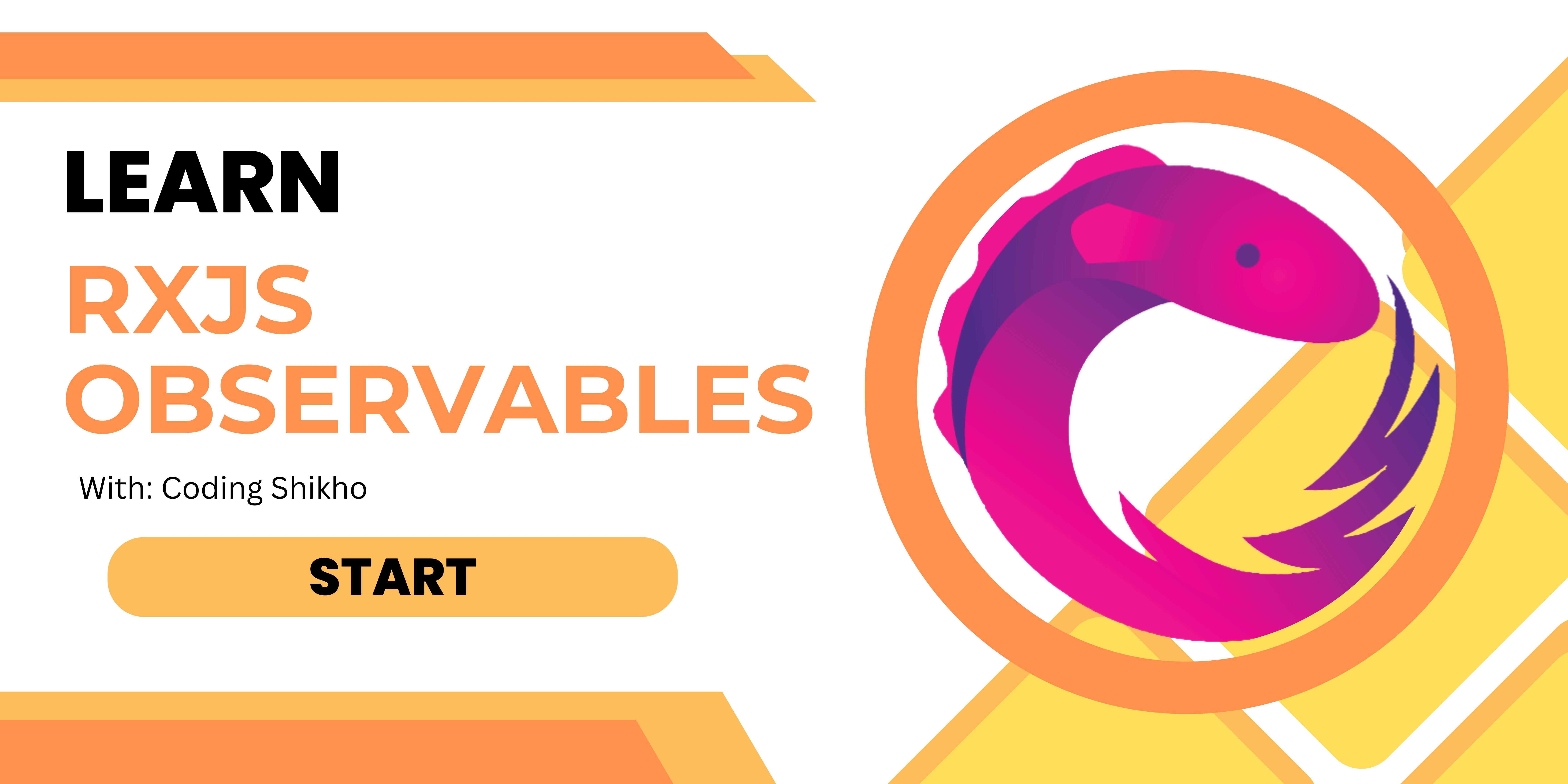
COURSE DESCRIPTION
This course provides a comprehensive introduction to Rxjs Observables Essentials, covering the fundamentals of creating dynamic and interactive websites using react. Students will gain hands-on experience in developing web applications using industry-standard technologies and frameworks.Read about our other course at codingshikho.com
CERTIFICATION
We will begin by teaching you How to develop apps with the help of our course Once you gain confidence in building and developing apps using Keras , then we’ll proceed with Paid version of this Keras and designing. and then you are provided with certificate.
We will Cover the following Topics in my sessions : –
- Learn in-demand skills from university and industry experts
- Master a subject or tool with hands-on projects
- Develop a deep understanding of key concepts
- Earn a career certificate from Coding Shikho
What You Will Learn Through This Course?
You will Learn Different Third Party Libraries
How to Think To Solve A Problem in Rxjs Observables
Clean Code and best Project Structure For Rxjs Observables
Requirement To Get Started
Basic Understanding Of Rxjs Observables
This Course WIll Help You a Lot To learn Major Concepts and use cases of React Native. You will Also Learn how to think and solve a problem in react native
Curriculum
- 1 Section
- 7 Lessons
- 10 Weeks
- Rxjs Observables [2020]7
Requirements
- Node.js and npm: React Native requires Node.js and npm (Node Package Manager) to be installed on your machine. You can download and install them from the official website: Node.js.
- React Native CLI: Install the React Native command-line interface globally using npm: npm install -g react-native-cli
- Java Development Kit (JDK): React Native relies on the Java Development Kit (JDK) for Android development. You can download and install the JDK from the Oracle website or use OpenJDK. Make sure to set the JAVA_HOME environment variable.
- Android Studio: For Android development with React Native, you need to install Android Studio, which includes the Android SDK, AVD Manager, and other necessary tools. Follow the instructions on the official Android Developer website: Android Studio.
- Xcode: If you are developing for iOS, you'll need to install Xcode on a macOS machine. Xcode includes the iOS SDK and tools for building iOS applications. You can download it from the Mac App Store.
- Watchman: Watchman is a file watching service that is used by React Native to speed up development. You can install it using Homebrew (for macOS) or by following the instructions on the official Watchman GitHub repository: Watchman.
- React Native dependencies: Create a new React Native project using the React Native CLI:
- Emulator/Device: You can run your React Native app on a physical device or use an emulator/simulator. For Android, you can set up virtual devices using Android Studio's AVD Manager. For iOS, you can use the iOS Simulator provided by Xcode.
- Text Editor/IDE: Use a code editor or integrated development environment (IDE) for writing your React Native code. Popular choices include Visual Studio Code, Atom, or any other editor of your preference.
Features
- Fundamentals of React Native: Understanding the basics of React Native, including its architecture, components, and the React framework.
- Setting Up Development Environment: Step-by-step instructions on setting up the development environment for both Android and iOS platforms.
- Component Development: In-depth coverage of React Native components and their lifecycles, state, and props management.
- Navigation: Navigation is a crucial aspect of mobile app development. Courses should cover different navigation options in React Native, such as Stack Navigator, Drawer Navigator, and Tab Navigator.
- Styling and Theming: Teaching how to style React Native components using stylesheets and discussing theming options.
- State Management: An overview of state management in React Native applications, including local state management and integration with global state management libraries like Redux or Context API.
- API Integration: How to integrate with RESTful APIs and handle data fetching and manipulation in React Native.
- Testing and Debugging: Covering tools and techniques for testing and debugging React Native applications.
- Performance Optimization: Techniques for optimizing performance in React Native apps, including handling large datasets, lazy loading, and code splitting.
- Deployment and Publishing: Guidance on how to build and deploy React Native applications to app stores, including the Apple App Store and Google Play Store.
- Continuous Integration/Continuous Deployment (CI/CD): Strategies and tools for implementing CI/CD pipelines for React Native projects.
- Platform-Specific Features: Covering platform-specific features and implementation details for Android and iOS.
- Advanced Topics: Exploring advanced topics such as animations, gesture recognition, and integrating native modules.
- Real-world Projects: Building real-world projects to apply the learned concepts in practical scenarios, reinforcing skills through hands-on experience.
- Community and Resources: Guiding students on how to leverage the React Native community and other online resources for continued learning and problem-solving.
- Updates and Best Practices: Keeping the course content up-to-date with the latest React Native releases and industry best practices.
